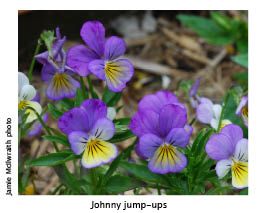Extra stuffings for zucchini flowers
These stuffings will fill around 20 zucchini flowers.
Breadcrumbs, anchovies, parsley
1 cup coarse breadcrumbs
8-10 anchovy fillets, finely chopped
3 tablespoons finely chopped Italian parsley
grated rind of 1/2 lemon
salt and ground black pepper to taste
Mix together well in a bowl with a fork until combined, then pack into each zucchini flower with a teaspoon.
Ricotta and herbs
200g ricotta cheese
2 tablespoons snipped chives
2 tablespoons chopped Italian parsley
Mix together well in a bowl with a fork, then pack into each zucchini flower with a teaspoon.
Minced prawn
250g raw prawn meat
grated rind 1/2 lemon
1 egg white, lightly beaten
salt and pepper to taste
Put ingredients into a blender or food processor and whiz until combined into a paste. Use this to stuff the zucchinis.
Spinach and feta
100g thawed frozen spinach (or 100g cooked spinach)
100g sheep’s milk feta cheese, crumbled into small pieces
ground black pepper
good pinch of nutmeg
Break up thawed or cooked spinach in a bowl then add the crumbled feta cheese, grate over the pepper and nutmeg (but don’t add salt, as the feta is salty enough) and combine well. Use this to stuff the zucchini flowers.
Leftover rice
Don’t toss away that leftover fried rice or risotto, use it to stuff some zucchini flowers. If anything in the rice is a bit chunky (eg, whole prawns or big chunks of mushroom), cut these into smaller bits before using in the stuffing. If you have leftover plain steamed rice, stir in a good amount of chopped shallots (scallions) or herbs. Tip: let the rice get close to room temperature before using it as the stuffing.
Edible flower petals
Apple and plum blossoms
Bellis perennis (English Daisy)
Borage
Calendulas (English or pot marigolds)
Carnations (these can be peppery)
Chrysanthemum
Cornflowers
Gardenias
Gladiolus
Hollyhocks
Johnny Jump Ups
Lavender
Lilac
Nasturtiums (also can be peppery)
Pansies
Peonies
Phlox
Roses
Safflower
Snapdragons
Sunflower
Violets
Using edible flowers safely
1. If unsure what a flower is, don’t eat it – there are many common garden flowers which are toxic to eat (see list below). For example, calenulas are also called marigolds and they’re OK to eat, but tagetes are also called marigolds and they are toxic. Are you sure which marigolds are which?
2. The safest flowers to eat are the ones you have grown yourself, at home, and have used no toxic sprays.
3. Flowers from florists are not a good idea to eat, as the floristry industry uses pesticides.
4. Remove the pistil and stamens from flowers before eating them. The petals are the safest part to eat, and they look best in a salad, too.
5. Wash flowers before eating them, but only pick the flowers just before you want to add them to a salad. If they are looking a bit wilty, dip them into iced water to refresh them.
6. The best way to use most edible flowers is as a garnish for a garden salad.
Sugared edible flowers
edible flower petals
egg white
superfine sugar
waxed paper or baking paper
Spread out the superfine sugar on a plate or board. In a bowl, whisk an egg white till it firms up and becomes white in colour, then use a small brush to brush some egg white onto each flower petal. Place each petal on the superfine sugar and gently sprinkle a bit more superfine sugar over it. Then place the petals onto the waxed paper or baking paper for a few hours to dry.
Toxic garden flowers
This list is not complete, but it covers many popular garden plants.
Agapanthus, alstroemeria, anemone, anthurium, arum lily, azalea, begonias (excepting tuberous begonias), bleeding heart, buttercup, calla lily, clematis, crocus, cyclamen, dahlia, daphne, daylily, delphinium, eucalyptus, foxglove, grevillea, hellebore, hippeastrum, hyacinth, hydrangea, iris, ivy, lily-of-the-valley, lupin, narcissus (ie, daffodil), oleander, petunia, pieris, poppy, ranunculus, rhododendron, sedum, sweet pea, tagetes (marigolds), tulip, wisteria.



